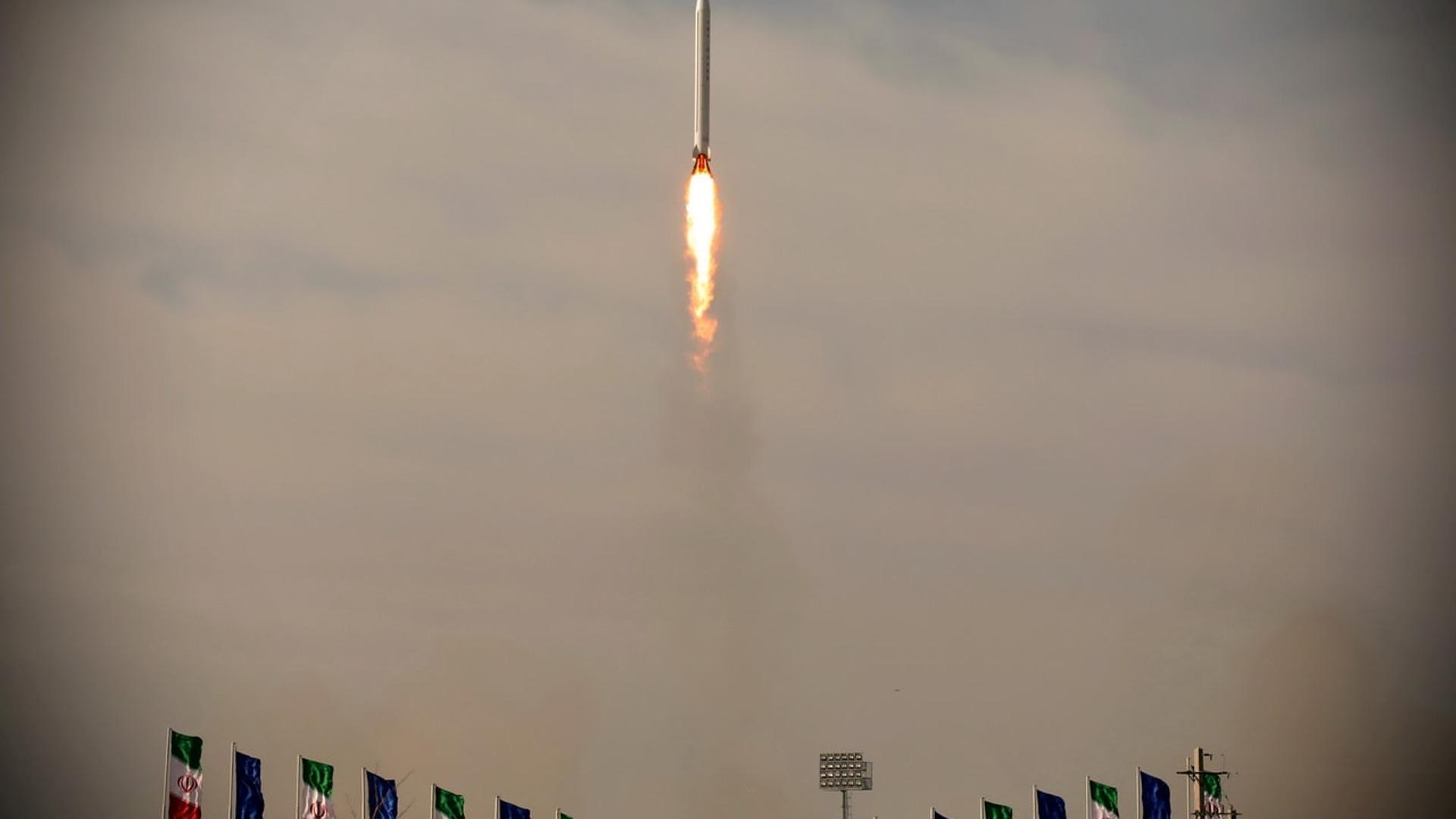In the midst of fighting a pandemic and dealing with US sanctions, Iran has launched a military satellite to showcase its technological advancement.
On 22 April, the 41st anniversary of the founding of Iran’s Islamic Revolutionary Guard Corps (IRGC), the IRGC successfully launched a “military satellite” into space and simultaneously successfully launched us all into the latest chapter in the saga of the US-Iran battle.
The repercussions do not only have global ramifications in terms of how Washington and Tehran will interact, and other parties to the now defunct Iran nuclear deal, but also a regional impact as it will spur a desire on the part of Iran’s neighbours to start competing in a Middle Eastern arms and space race.
The Iranian Space Agency (ISA) is normally the body responsible for Iran’s space program, but the successful launch of the Noor satellite marks the first successful attempt by a branch of the Iranian military.
The IRGC used a heavily modified version of the Safir space-launch vehicle to get its surveillance satellite into space, a system ordinarily utilised by the ISA whose last successful space launch was four years ago but which has met with a string of failures since.
By making such a move, and by sidelining the civilian space agency, the IRGC is trying to show the United States that its “maximum pressure” campaign to force Iran back to the negotiating table to wrangle out a new deal will not work.
The IRGC knows the limits of its capabilities, yet it is nevertheless making a political statement that the regime will not be deterred, and the Trump administration’s strategy will ultimately be faced with failure.
Hilariously, Iranian generals have been full steam ahead on the propaganda train, claiming their launch was the birth event of Iran coming into its own as a “superpower”.
Speaking to state media, General Amir Ali Hajizadeh, the commander of the IRGC’s aerospace division, grandiosely stated that “nobody will dare to threaten us or to even give us a threatening look”, playing up Iran’s conventional military capabilities as being able to withstand the United States and “other greater powers”.
Nobody outside of Iranian propagandists takes such statements seriously, however.
The commander of the US Space Command, General Jay Raymond, has dismissed Iran’s military satellite as no more than “a tumbling webcam” floating through space, which supports the argument that the Noor satellite is a political, and not military, statement.
What is important is that the technology of what was put into orbit is less important than the technology required to put it into orbit in the first place.
There can be no doubt that Iran has made significant advances in its technological base and that it has built up a sophisticated science and engineering sector that allows it to punch above its weight.
The technical know-how and the technological advancement required to put a satellite 425 kilometres into orbit has a lot of transferability to other fields, namely ballistic missiles armed with deadly payloads.
International, not just US, sanctions possible
An international think tank, the International Institute for Strategic Studies (IISS), has warned that the second generation of IRGC space-launch vehicles could easily be modified to serve a dual function of doubling up as ballistic missiles capable of delivering munitions.
While the IISS believes the present configuration would offer little to Iran’s existing medium-range ballistic missile arsenals, future iterations could be modified to carry a warhead payload of 1,000 kilograms to a distance of 2,500 kilometres.
It is therefore unsurprising that the United States is now trying to jump back onto the nuclear deal they abandoned years ago now to trigger the so-called “snapback” clauses of the agreement.
What this means is that all United Nations-approved sanctions on Iran’s nuclear, missile, and conventional arms programs that existed prior to the nuclear deal would be immediately re-imposed should global powers decide Iran has not lived up to its end of the bargain.
The difficulty here, of course, is the fact Trump tore up the agreement and walked out on it, which places Washington in a difficult position of trying to keep one foot in to trigger clauses of an agreement it unilaterally abrogated.
In all likelihood, the US will have no legal power to initiate any snapback, and it is unlikely China and Russia will agree to allow them to.
Instead, it would seem prudent for the US to lean on its traditional allies, including the United Kingdom, France, and Germany who are all still part of the nuclear deal, and having them trigger the snapback in the US’ stead.
Whether the Trump administration will be able to muster up the diplomatic clout to cajole the Europeans into doing its bidding is another matter, particularly considering Trump’s often insulting and bellicose attitude towards them.
On the one hand, if he can successfully convince them to come on board and initiate the snapback clauses, then Trump will have successfully killed the deal he promised to torpedo years ago now.
On the other, if Trump fails to do this, then countries like Saudi Arabia who feel threatened by Iran’s military expansionism will accelerate their own arms development programs if the US will not sell them the arms they need to redress the balance of power.
Either way, we will be looking at a more militarised Middle East with an even smaller margin of error for diplomatic or military miscalculations.
Author: Tallha Abdulrazaq
Tallha Abdulrazaq is an award-winning academic and writer, with a specialism in Middle Eastern strategic and security affairs.
Source










Discussion about this post